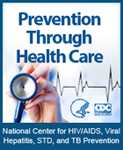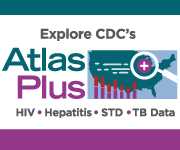CROI 2016 Select CDC Studies of Interest
Resources
HIV testing is essential for improving the health of people living with HIV and helping prevent new infections. CDC recommends that all adolescents and adults get tested at least once for HIV as a routine part of medical care, and that gay and bisexual men and others at high risk be tested more frequently. While testing rates have steadily increased, CDC estimates that 1 in 8 Americans living with HIV remain unaware of their infection.
Two CDC studies being presented at CROI 2016 investigate current gaps in routine HIV testing and provide additional insight into what more must be done to increase testing and awareness levels.
Missed Opportunities for HIV Testing During Routine Doctor Visits, BRFSS, 2011-2013
Poster Presentation, Session P-X3--February 24, 2016, 2:45 – 4:00pm
Overview: Both CDC and the United States Preventive Services Task Force advise clinicians to screen for HIV among all adolescents and adults, regardless of their risk. This study looks at adults (18-64) who had a routine doctor visit in the previous year but have never been tested for HIV to examine regional variation and individual characteristics associated with missed opportunities for HIV screening.
During 2011-2013, nearly 100 million U.S. adults had never been tested for HIV. More than half of these individuals had a routine doctor visit in the past year, which the authors consider a missed opportunity for HIV screening. The percentage of people who missed a testing opportunity in this way increased from 2011 (61.8 percent) to 2013 (63.7 percent).
For the most recent year, 2013, the study shows that:
- Women, persons aged 45-64, and non-Hispanic whites accounted for the highest percentage of people with missed opportunities for HIV screening
- People living in the Eastern and Southern United States had higher rates than those living in other regions of the country of having recently missed an opportunity for HIV screening
- People with health insurance coverage accounted for the highest percent of people with missed opportunities for HIV screening (88.6 percent).
This analysis draws attention to current gaps in routine HIV testing and the need for all providers and local health authorities—especially those in areas with a high prevalence of undiagnosed HIV—to increase routine HIV screening rates.
CDC Contact: Michelle Van Handel, CDC
Location: Hall A/B (Hynes Convention Center)
DATE/TIME: February 24, 2:45pm – 4:00pm
Setting a Benchmark for HIV Testing at Visits to U.S. Physician Offices by men aged 18-39 years
Poster Presentation, Session P-X3--February 24, 2016, 2:45 – 4:00pm
Overview: Recent changes in health insurance coverage have increased the number of people who can receive free HIV testing during routine doctor visits. This analysis estimates how frequently HIV tests are administered during regular doctor visits and outpatient visits for men, based on data from the 2009-2012 National Ambulatory Medical Care Survey. It sets a benchmark for future progress toward meeting routine HIV testing recommendations.
The findings highlight how infrequently adult men are tested for HIV during outpatient physician appointments in the United States:
- For men aged 18-39, HIV tests were performed during only 1.3 percent of medical encounters (754,280 tests out of 58.4 million annual visits)
- Among those aged 18-24, HIV testing rates were higher for black men (tested at 2.5 percent of visits) and Latino men (5.1 percent) compared to white men (1.1 percent); however, black and Latino men attended annual check-ups less frequently than their white counterparts (0.61 visits per person among blacks, 0.59 among Latinos, 1.3 among whites);
- Among those aged 18-24, HIV testing rates were higher for black men (tested at 2.5 percent of visits) and Latino men (5.1 percent) compared to white men (1.1 percent); however, black and Latino men attended annual check-ups less frequently than their white counterparts (0.61 visits per person among blacks, 0.59 among Latinos, 1.3 among whites);
The authors conclude that a four-fold increase in HIV testing at routine doctor visits would help achieve significant increases in testing among all groups—moving the nation closer to full implementation of CDC’s HIV testing recommendation that everyone between the ages of 13 and 64 get tested for HIV at least once as part of routine health care.
CDC Contact: Karen Hoover, CDC
Location: Hall A/B (Hynes Convention Center)
DATE/TIME: February 24, 2016, 2:45 PM – 4:00 PM ET
###
- Page last reviewed: February 24, 2016
- Page last updated: February 24, 2016
- Content source:


 ShareCompartir
ShareCompartir

